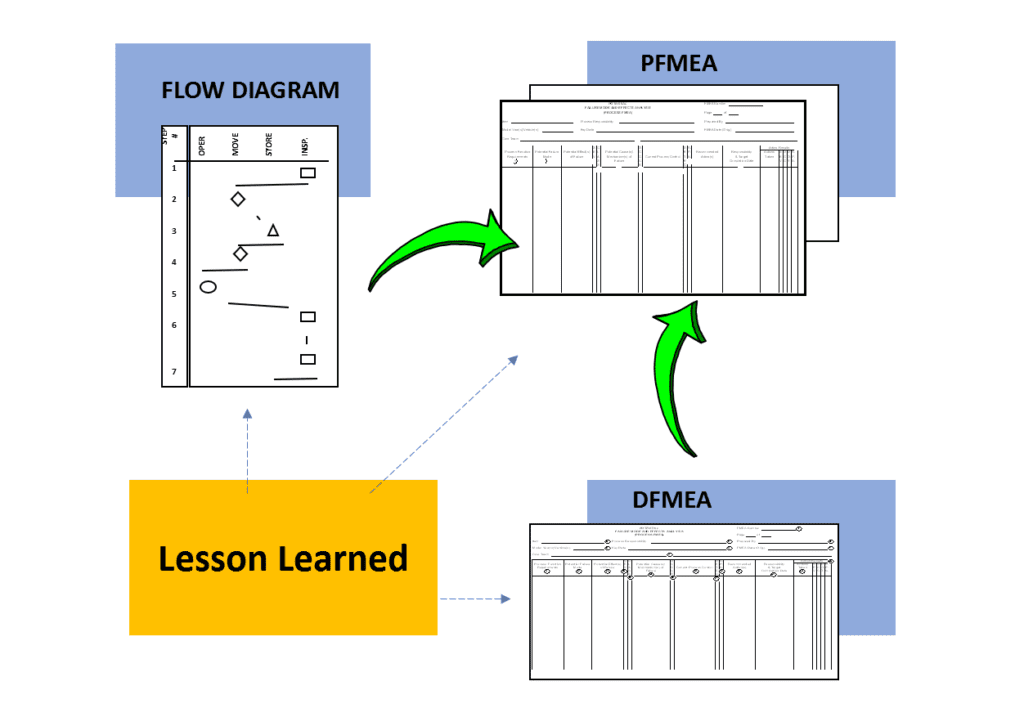Even if we have implemented in step D5 permanent corrective actions, we have no guarantee that the problem will not occur again, without appropriate preventive actions to prevent recurrence of the problem.
In case of 8D report using, this possibility is obtained in step D7 dedicated to preventive actions.
D7 preventive actions – basic information
Defining the strategy in step D7, we can’t forget that the implemented corrective actions must not only prevent the same problems in the production of a given product from reoccurring, but also concern:
- all final products that are manufactured under the same or similar conditions. In this case, we can consider a production cell, process, material, production line or technology
- other products that are of a similar design or are from the same product family, e.g. window lifters with similar construction, but for different car models or for different customer plants
- future projects that will be launched at the supplier’s production facility
- gaps in the system, which meant that the problem was not found in the next step of the production process, but at the customer location. We do not limit ourselves here only to the internal customer and the customer to whom we deliver products for assembly, but we also take into account reports from the warranty field.
Communication during implementation
Effective communication is one of the key elements during change implementing, which of course includes the implementation of preventive measures. Therefore, in this topic, it is worth remembering two basic rules:
- all interested personnel must be informed of the actions which will be taken (in case of shift work communication should cover all of them)
- communication should be presented in daily meetings with management for appropriate allocation of resources
Preventive actions examples
We must be aware that in addition to the frequent practice of Control Plan and PFMEA updating, we have many other options relating to preventive actions to prevent problem occurrence. These include, but are not limited to updates of:
- visual master samples
- changeover instructions carried out by production or maintenance operators
- Flow Chart
- LFMEA related to the logistics area, if the problem was related to improper handling or storage of sub-components or final products
- information provided as part of the Lesson Learned database, which will be taken into account when creating the Flow Chart, DFMEA and PFMEA for new projects – see figure below:

Fig. 1. Lesson Learned interaction
- Voice of Customer (V0C) or Voice of Process (VoP) tolerances change within the range limits. The second is more often used to reduce internal scrap
- drawings – both sub-components and finished products
- incoming control including modification of the measurement method, frequency and selection of sample sizes. In the latter case, we should note that it is more efficient to select one part from each cavity (e.g. if there are eight), rather than randomly measuring five of them
- Boundary samples or Failure Catalog
- packing instructions for finished products
- selection instructions in case of nonconformity with the final product. This scenario is where parts can become damaged during selection and improper repackaging
What if we don’t implement?
Lack of preventive actions implementation can have very serious consequences for supplier plant. As an example may serve the story of plant producing metal structures for seats.
The story begins with the transfer of the stamping mould that was used to manufacture another model from abroad.
Production ran smoothly for the first few weeks. However, after the first scheduled maintenance carried out by the maintenance staff, the client started to issue a problem with the backrest noise. During the analysis, it turned out that the same problem existed in the earlier plant and was solved by modifying the height of one of the die elements from stamping mould.
On the other hand, the fundamental failure, that was made, was the fact that no preventive actions were planned for the actions defined in step D5. In this case, it referred to drawing documentation updating both – manufactured seat structure element and the stamping mould drawing data documentation.
You can download an automatic, editable Excel form for free on the Free Quality Tools
Document name: 8D Report – Excel form


